 Your new post is loading...
 Your new post is loading...

|
Scooped by
Jeff Domansky
November 14, 2016 11:08 AM
|
Since Tuesday’s election, there’s been a lot of finger pointing, and many of those fingers are pointing at Facebook, arguing that their newsfeed algorithms played a major role in spreading misinformation and magnifying polarization. Some of the articles are thoughtful in their criticism, others thoughtful in their defense of Facebook, while others are full of the very misinformation and polarization that they hope will get them to the top of everyone’s newsfeed. But all of them seem to me to make a fundamental error in how they are thinking about media in the age of algorithms. Consider Jessica Lessin’s argument in The Information: "I am deeply, deeply worried about the calls I am hearing, from journalists and friends, for Facebook to intervene and accept responsibility for ensuring citizens are well-informed and getting a balanced perspective…. Facebook promoting trustworthiness sounds great. Who isn’t in favor of accepting responsibility and ferreting out misinformation? But major moves on Facebook’s part to mediate good information from bad information would put the company in the impossible position of having to determine “truth,” which seems far more objective than it really is. Moreover, it would be bad for society.” My response: Facebook crossed this river long ago. Once they got into the business of curating the newsfeed rather than simply treating it as a timeline, they put themselves in the position of mediating what people are going to see. They became a gatekeeper and a guide. This is not an impossible position. It’s their job. So they’d better make a priority of being good at it....

|
Scooped by
Jeff Domansky
October 28, 2016 12:40 AM
|
Try to imagine getting the latest news by chatbot? If you can think it, you can ask for breaking news from CNN using Amazon Echo. That’s right. It’s the latest news brought to you by CNN chatbot. CNN launches chatbot news CNN has done a great job of delivering the news on TV and new social media channels. In fact, it has a 40-person dedicated digital team ready to deliver chatbot news according to a Lost Remote post by Max Willens:...

|
Scooped by
Jeff Domansky
October 24, 2016 10:45 PM
|
It’s been a remarkable year for the nation, and its press. Transfixed by the Trump phenomenon, election anxiety has all but consumed us. But soon, what has felt like a national colonoscopy will soon be over, and the press will march (or at least step) forward. As we consider the most newsworthy U.S. press happenings of this year, let’s start projecting forward to 2017. Tronc may well disappear early into it, but in a sons-also-rise scenario, the Murdochs and the Sulzbergers maintain center stage, and the future of Gannett and GateHouse — two companies that collectively own almost one in five U.S. dailies — becomes even more important. Let’s take 10 storylines of 2016 and extend them into the year ahead....

|
Scooped by
Jeff Domansky
October 21, 2016 3:17 PM
|
Digital news continues to evolve, pushed by a variety of innovations in recent years, from groundbreaking new technologies like virtual reality and automated reporting to experiments on social platforms that have altered campaign coverage. As journalists and media practitioners gather for the annual Online News Association Conference, here are 10 key findings from recent Pew Research Center surveys and analyses that show how these rapid digital shifts are reshaping Americans’ news habits...

|
Scooped by
Jeff Domansky
October 7, 2016 11:41 AM
|
Digital publishers may be pouring time and energy into cranking up their video operations, but for a lot of their potential viewers, text is still the way to go. New data from Pew Research finds that, when it comes to the news, younger adults still prefer words over moving images. While 46 percent of Americans overall say they prefer to watch the news over reading it, that number is far lower for Americans between the ages of 18 and 29 — only 38 percent of that group named video as their preferred news consumption format. In contrast, 42 percent said that they actually prefer text (which they prefer to read online, of course). Just 19 percent of young adults named listening as their preference. (“Smelling the news” was not an option.) Those preferences put young people at odds with those between 50 and 64 and those over 65, of which 52 percent and 58 percent, respectively, said they prefer to watch the news. Less than thirty percent of people in both those age groups said the same for text.These generational gaps in news consumption preferences join similar findings from back in July, when Pew reported that 54 percent of 18- to 29-year-olds said that they prefer to get their news online — significantly higher than, say, the 38 percent of those ages 30 to 49, or the 15 percent of those ages 50 to 64 who said the same....

|
Scooped by
Jeff Domansky
September 21, 2016 5:38 PM
|
Back in June, I talked with Parse.ly data analyst Conrad Lee about why stories about Donald Trump weren’t attracting the same audience online as they were on television. At the time, based on data from more than 100,000 news articles from 300 newsrooms, it looked as if Trump stories were actually less popular than stories about other candidates, including Hillary Clinton. This was before the convention and the formal nomination of both candidates of course.
Lee took an another look at the data last week and found that things have shifted. Trump still receives the lion's share of articles, even from publishers that are left-leaning.
Today the data show that Trump stories get more page views than stories about Clinton do. Both the overall number of stories and page views per post peaked around the conventions in late July, before dipping again in August.
Lee makes no distinction between positive and negative stories. Both candidates have been the subject of intense reporting in recent weeks. But this is an interesting set of data nonetheless as we think about the proper role of journalists going into the first debate next week, when 75 percent of voters plan to tune in....

|
Scooped by
Jeff Domansky
September 8, 2016 10:58 AM
|
The Washington Post is enjoying a “remarkable” revenue picture, the paper said in a leaked memo. The Post’s financial picture has been shrouded in secrecy since Amazon founder Jeff Bezos took it private three years ago. So when figures do slip out, they often don’t tell the whole story. Still, they’re interesting because the Post is a rare legacy media outlet that, with Bezos’ deep pockets and patience, would seem to have the best shot at creating a sustainable online news model. Now an internal memo got out that sheds a little more light on that financial picture. Yesterday’s memo, from Post chief revenue officer Jed Hartman, painted a rosy picture, saying, “We are a growing business.” The Post wouldn’t elaborate on the memo. Hartman wrote that the Post’s annual digital ad revenue is a “nine-figure” business, which stands in contrast to the $60 million that New York magazine estimated in a recent profile. He wrote that total ad revenue is up year over year, led by a 48 percent increase in digital sales through August. Within digital, Hartman wrote that the biggest increase is in native advertising, up 275 percent; followed by programmatic, up 92 percent; and video, up 82 percent....

|
Scooped by
Jeff Domansky
September 1, 2016 11:28 AM
|
The 18-24 crowd has used the internet as its primary source for news for several years. Now it is specifying “social media” as its main source of news, with that niche overtaking television for the first time. The information comes from a study done by The Oxford University Reuters Institute for the Study of Journalism. It looked at consumers of news and information around the world for its “Reuters Institute Digital News Report 2016.” This is the fifth year it has issued such a report. It’s a fascinating read. 28 percent of 18-24 year-olds say social media is their main source of news, compared to 24 percent who cite television. Since 2013, the number of people in the US who say they get their news from social media has doubled—46 percent now use social media for news....

|
Scooped by
Jeff Domansky
August 8, 2016 5:25 PM
|
The New York Times has embarked on a new form of storytelling to enhance its coverage of the Summer Olympics: Two-way text-messaging.
For two weeks, deputy sports editor Sam Manchester will be sending text messages from the Olympic Games in Rio to readers who sign up for the service.
Unlike email alerts or push notifications, these texts will give readers an informal, behind-the-scenes look at the Games, almost as if they had a friend texting them directly. Readers can also write back to Manchester. And while he won't be able to reply to each message, the responses can be used to personalize each reader's experience.
The innovation is an effort to reach readers on the platforms that are central to their lives, Andrew Phelps, the Times' Director of Personalization, told CNNMoney....

|
Scooped by
Jeff Domansky
June 20, 2016 6:27 PM
|
“We really hit a landmark this year,” Newman told the audience, highlighting how – for the first time – more than half of the DNR sample now uses social media for news each week. In tracking this trend, we’ve seen “enormous growth in most markets since 2013,” he added. Key stats: - 51% use social media for news each week.
- 12% say social media is their main news source.
- More 18-24s now prefer social media (28%), as a news source, to TV news (24%).
- 44% of the DNR sample uses Facebook for news each week.
Facebook’s news reach is more than double its nearest rival, You Tube (19%), although the video network plays a prominent news role in some countries. Twitter (10%) meanwhile has an impact due to its popularity with heavy news users and influencers....

|
Scooped by
Jeff Domansky
June 3, 2016 11:00 AM
|
Juan Andres Muñoz was in his bedroom when he first tweeted news of Osama Bin Laden’s death to hundreds of thousands of followers of CNN’s Spanish language network, CNN en Español.“ I remember I was at home, and back at that time we didn’t have a lot of people working on social – I was doing a lot of the tweeting myself. I saw emails coming in, and everything indicated that it would be a big big story. As soon as it was confirmed by CNN, I tweeted immediately from the main CNN en Español account.“ I tweeted that from my room. It went all around the Spanish-speaking world, and ended up being one of the three biggest breaking news tweets on the event.” That experience confirmed to Juan just how effective social media could be in spreading news and information....

|
Scooped by
Jeff Domansky
May 27, 2016 2:22 PM
|
A majority of U.S. adults – 62% – get news on social media, and 18% do so often, according to a new survey by Pew Research Center, conducted in association with the John S. and James L. Knight Foundation. In 2012, based on a slightly different question, 49% of U.S. adults reported seeing news on social media.1
But which social media sites have the largest portion of users getting news there? How many get news on multiple social media sites? And to what degree are these news consumers seeking online news out versus happening upon it while doing other things?
As part of an ongoing examination of social media and news, Pew Research Center analyzed the scope and characteristics of social media news consumers across nine social networking sites. This study is based on a survey conducted Jan. 12-Feb. 8, 2016, with 4,654 members of Pew Research Center’s American Trends Panel.
News plays a varying role across the social networking sites studied.2 Two-thirds of Facebook users (66%) get news on the site, nearly six-in-ten Twitter users (59%) get news on Twitter, and seven-in-ten Reddit users get news on that platform. On Tumblr, the figure sits at 31%, while for the other five social networking sites it is true of only about one-fifth or less of their user bases....

|
Scooped by
Jeff Domansky
May 12, 2016 10:23 PM
|
“We want most of all to enrich man’s spirit,” Johnson said.
Johnson’s words in launching the Corporation for Public Broadcasting set the tone for a discussion on public media in today’s digital world at Knight Foundation’s Media Learning Seminar.
“That’s a little bit of the role we have today in thinking about what is public media’s role in enriching man and women’s spirit in our country, and ensuring a thriving and informed democracy,” said Knight Foundation’s Vice President for Media Innovation John Bracken kicking off the conversation with representatives of NPR, Detroit’s WDET and St. Louis Public Radio.
While public media continues to be guided by the spirit of Johnson’s remarks, the digital age has brought huge changes to the kind of information people want and the way they access it, pushing news organizations to meet new information demands, the panel agreed. Yet while Americans are inundated with news and content, “it’s not true that all our information needs are met,” said Mike Oreskes, senior vice president, news, and editorial director at NPR.
The biggest unmet need is in local journalism, he said....
|

|
Scooped by
Jeff Domansky
November 11, 2016 4:42 PM
|
Breitbart, the website at the center of the self-described alternative online media, is planning to expand in the United States and abroad. The site, whose former chairman became the chief executive of Donald J. Trump’s campaign in August, has been emboldened by the victory of its candidate.
Breitbart was always bullish on Mr. Trump’s chances, but the site seems far more certain of something else, as illustrated by a less visible story it published on election night, declaring a different sort of victory: “Breitbart Beats CNN, HuffPo for Total Facebook Engagements for Election Content.”
It was a type of story the site publishes regularly. In August: “Breitbart Jumps to #11 on Facebook for Overall Engagement.” In June: “Breitbart Ranked #1 in the World for Political Social Media; Beats HuffPo by 2 Million.” Late last year: “Breitbart News #6 for Most Comments Among English Facebook Publishers Globally.”
These stories were self-promotional. But the rankings, released on a monthly basis by a company called NewsWhip, which measures activity on social networks, represented a brutal leveling. They were unelaborated lists that ranked outlets in terms that were difficult to dispute — total shares, likes and comments....

|
Scooped by
Jeff Domansky
October 27, 2016 11:58 AM
|
For years, CNN’s news brand has been synonymous with its hosts and anchors. Yet as it’s set up beachheads on the platforms where more and more people consume news, it’s had to leave its broadcast stars on the sidelines: You can get CNN news on Facebook and Snapchat and Twitter, but you won’t get Anderson Cooper or Fareed Zakaria or Erin Burnett. A week before Election Day, that’s going to change, when it unveils a skill for the Amazon Echo that will give listeners near real-time updates sourced directly from CNN’s broadcast and its anchors (Skills are Amazon’s name for capabilities that third parties like CNN develop for Echo). It’s part of a broader push to optimize CNN’s content for quicker, more efficient distribution across the channels. “We put a lot of work into ensuring our audience hears our talents’ voices,” said Alex Wellen, CNN’s chief product officer, adding that he wanted the experience of using the new Amazon skill to feel “more chat than bot.”...

|
Scooped by
Jeff Domansky
October 22, 2016 1:08 PM
|
Pew Research tracks all kinds of media data but two recent facts stand out:
Only 18% of the public have “A lot” of trust in the information provided by “national news organizations.”
Understandably, only 4% of the public have “A lot” of trust in the information provided by social media.
Media credibility will continue to drop like a hot potato from the top of Trump Tower....

|
Scooped by
Jeff Domansky
October 20, 2016 4:01 PM
|
Some 23 per cent of news articles contain a social media embed, and 10 per cent of these embeds have either been modified or removed by their author since the article's publication, shows a report released today by SAM.
Social media curation platform SAM analysed one million web pages using its Report Card tool, focusing on North American news sites such as New York Daily News, Fox News, Vox, CNN or Forbes, to find out more about the role social media plays in newsgathering today.
The Report Card is available for free and enables publishers to find out how many social media embeds are currently on their websites and whether they have broken or they have been edited since publication....

|
Scooped by
Jeff Domansky
September 23, 2016 9:47 AM
|
Celebrities and gossip are one of the most talked about and sought after types of content on the internet. Many people will start their first website or blog as a celebrity fan site, then potentially turn it into much more over time. A great example of this would be Perez Hilton, who ended up turning his passion for celebrity gossip into a blog, which then transformed into a multi-million dollar business. So, now the question is… how can you start a celebrity fan site of your own?Good news! That’s exactly what we are going to be covering in this article today. By the time you finish reading through this simple five-step formula, you will have everything you need to go live with your first celebrity fan blog....

|
Scooped by
Jeff Domansky
September 20, 2016 11:25 PM
|
When many people hear the name BuzzFeed, they may think “exploding watermelon.” That’s reasonable enough, since BuzzFeed’s video of a melon unable to take the pressure of one more rubber band got more than 5 million views last April — with 800,000 people watching the messy event as it happened on Facebook Live.
But I get a different image: I think of the dogged reporter Andrew Kaczynski, surrounded by researchers, spending endless hours listening to old audiotapes, and coming up with scoop after scoop in the campaign season. It was Kaczynski’s team, for example, that found the radio clip of Donald Trump telling Howard Stern in 2002 that he thought the Iraq War was probably a good idea. That contradicted the Republican nominee’s claim that he opposed the war from the start.
Under editor Ben Smith (formerly of Politico), the company founded in 2006 has moved away from its listicle-and-cat-video heritage by hiring strong news talent, including investigative editor Mark Schoofs from ProPublica....

|
Scooped by
Jeff Domansky
September 1, 2016 11:42 AM
|
Barely two days after changes to its Trending Topics section, a fake article about Fox News anchor Megyn Kelly began trending on Facebook — before entirely disappearing on Monday morning. The incident came on the heels of Facebook’s announcement on Friday that human curators will no longer write the short descriptions that accompany trending topics on the site. Its trending news team was then shown the door. The Trending Topics section has been shrouded in controversy since May, when a Gizmodo report alleged an inherent bias in its prioritization of news articles, which also triggered a Congressional investigation as well as an internal Facebook investigation. The changes, clearly, are not devoid of problems. For our latest Digiday Confessions, we talked to a member of the now-defunct trending news team at Facebook, who reflected on the recent developments as well as time spent working on the team. Digiday has also reached out to Facebook for comment but has not yet received a response....

|
Scooped by
Jeff Domansky
August 26, 2016 2:09 PM
|
It looked like a garden-variety promotional tweet, designed to attract attention to the AP’s big investigation into allegations of conflict of interest on the part of the Democratic presidential candidate. But by trying too hard to drum up interest in the piece, the wire service made itself the target instead.
The post made a significant, and startling, claim. Namely, that “more than half those who met Clinton as Cabinet secretary gave money to Clinton Foundation.” Surely this was compelling evidence of a conflict.
As sharp-eyed reporters for competing news outlets noted within minutes of the tweet and article being posted, however, this statistic was only true if you ignored the thousands of government officials, dignitaries, and so on that Clinton met in her capacity as Secretary of State....

|
Scooped by
Jeff Domansky
July 11, 2016 11:00 AM
|
The Pew Research Center’s latest report supports much of what we already know about news media: Print is dying, digital is growing, and the future lies with mobile. What stand out are the findings about our news sharing habits, which suggest that sharing overwhelmingly remains a low-tech, offline activity. Despite huge growth in the use of social networks, 85 percent of US adults still prefer to share news by word of mouth rather than digitally, according to Pew. That’s not surprising if the news comes from a traditional medium, such as newspapers or TV, but even consumers who primarily got their news online were nearly three times more likely to share the news verbally than to post on social media, according to the report.In fact, active engagement with news on social media is relatively low in general. The proportion of people who often liked, commented, posted, and shared news was less than 16 percent, while those who did it only sometimes accounted for less than half of those surveyed. Interestingly, although young people are more likely to get their news online, they are no more likely to engage with news online than older people; indeed, Pew found that people over 50 were most likely to comment on news posts. That could be because young adults are less interested in news than their elders and discuss news at lower rates....

|
Scooped by
Jeff Domansky
June 13, 2016 11:07 AM
|
A new report from Pew Research Center shows an increase in the number of people in the United States getting their news from social media platforms. The report revealed that more than 62 percent said they get news on social media, which is about a 13 percent increase since 2012.OK, what else is new? Facebook is becoming more like Twitter as a news source.That might be your reaction to what is already a clear trend of people turning to social media for their news. But what does that mean for media outlets? We dig into the numbers here to translate them into actionable insights....

|
Scooped by
Jeff Domansky
May 28, 2016 11:53 AM
|
No need to seek out the news. Today, we can just click around on cat videos and find it by accident. A poll released Thursday by the Pew Research Center found that a majority of Americans (62%) now get news from social media. That includes 66% of Facebook FB -0.10% users — a big deal because more than two-thirds of Americans are on Facebook. The math works out to about 44% of all Americans getting news from Facebook. It’s a number that could scare users angered by the recent censorship controversy. In early May, a staffer accused Facebook of preventing conservative stories from appearing in the small Trending Topics section that appears to the right of the main News Feed column. Facebook has denied it has a bias, but that hasn’t stopped the conservative backlash. Liberals, too, have complained about the power that Facebook has over the news media. Well, it turns out that that social media does have a lot of influence when it comes to how people get their news. It’s not just Facebook. On Reddit and Twitter TWTR +5.59%, 70% and 59% of users, respectively, say they use their networks to find news....

|
Scooped by
Jeff Domansky
May 23, 2016 9:24 AM
|
From LocalLabs to GoLocal24 to Everyblock, hyper-local news startups have consistently collided with foreboding economics: Narrow audiences tend to be small audiences, and small audiences are hard to monetize. But Ripple founder and CEO Razmig Hovaghimian, who previously made splashes with Embrace and Viki, thinks his latest project could build a more successful business model for hyper-local news — and several heavyweight funders are buying in. "I want [Ripple] to be a platform where storytellers get not only recognition and satisfaction from it, but compensation as well." -Razmig Hovaghimian EarlIer this month, Hovaghimian and his six-person team launched Ripple, a hyper-local news app that uses geo-location technology to help users discover the stories closest to them. Backed by Greylock Partners, Knight Foundation, MIT Media Lab director Joi Ito and other funders, Ripple has now launched in ten cities, including San Francisco and New York, and Hovaghimian says more locations are coming soon. source of enthusiasm for Ripple is two-fold: First, by combining geo-mapping technology with a voting system that allows stories to “ripple out” to a wider audience, Ripple creates an opportunity to produce hyper-local news at scale — a big step toward business viability....
|



 Your new post is loading...
Your new post is loading...



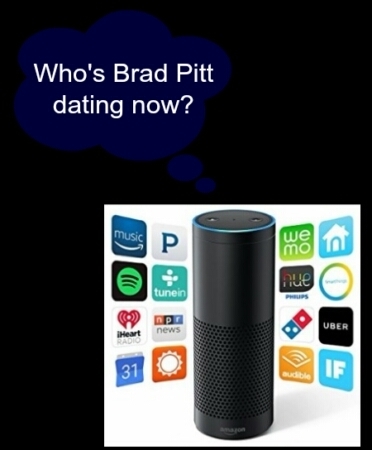

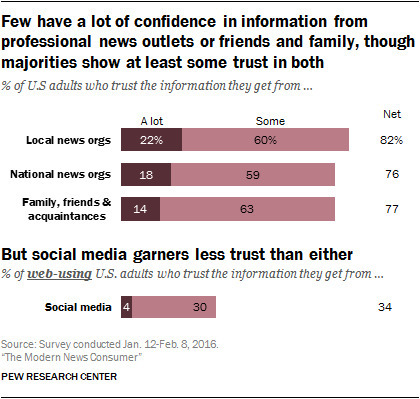


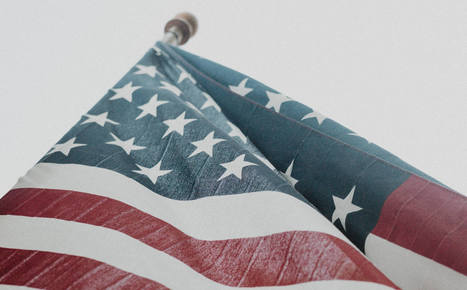





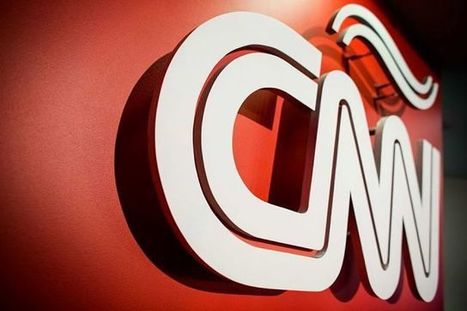
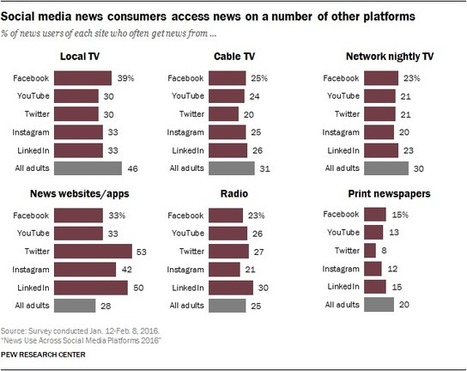






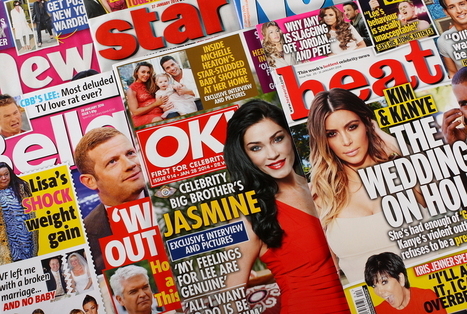
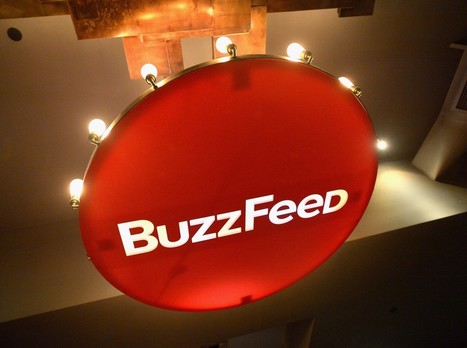




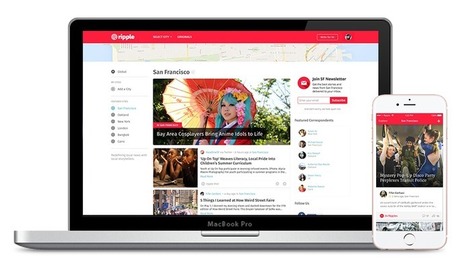





In a compelling argument, Tim O'Reilly says Facebook is obliged to maintain editorial oversight of content.